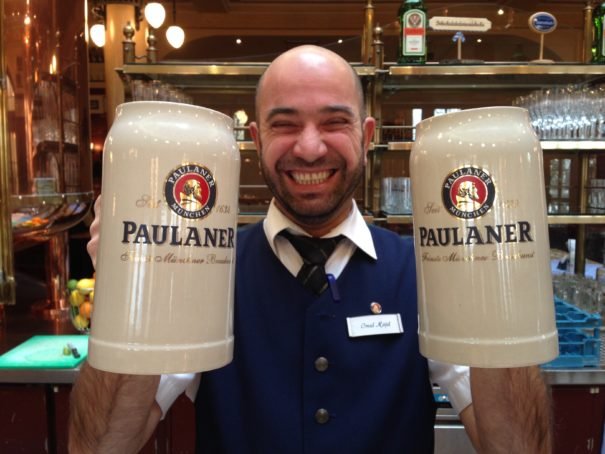
Starkbierfest: A Multi‑Week Pre‑Game to Easter

Starkbierfest: A Multi‑Week Pre‑Game to Easter
Starkbier in Munich
Friday, March 10 kicks off 2017’s Starkbierfest, which is like a multi-week pre-game to Easter. Starkbierfest, which translates to “strong beer festival,” always comes after Carnival as part of what people call Munich’s fifth season. A few different beer halls throughout the city host the event, but I’ll be trotting my way up the stone steps to Paulaner am Nockherberg—the original and rowdiest of the bunch.
I moved here from Texas five years ago. During these years, I’ve learned how to open a beer bottle with a wine bottle. I fell in love, and then I fell out of love. I changed jobs. I packed 3.5 liters of beer into a 100-pound body last Oktoberfest, stuffed in the corseted bodice of a dirndl. I became familiar with the languages of German, German English, British English; lately, when I talk to Americans I have to look up their slang on Urban Dictionary.
I also went to my first Starkbierfest four years ago, which led me to some of my dearest friends here. Being a foreigner suddenly got a lot less lonely, so there’s a reason why this festival has a sentimental place in my heart. And in a couple months, with the Munich chapter of my life likely coming to a close, what better send-off than one more taste of Bavarian history and my own slosh of fond memories?
Starkbierfest is no Oktoberfest. There are no rollercoasters and far fewer Australians losing their passports. There are a few similarities, however: brass bands playing Oompah songs. Lederhosen and the flirtatious men who roam the aisles wearing them. Wooden benches that can withstand weeks of dancing, stomping, and stumbling. But this much smaller-scale tradition has its own origins, thanks to the cheekiness of some 17th-century monks.
Just like its hometown, Starkbierfest has a monastic origin. The Paulaner monks began brewing beer as early as 1634. Since their ascetic lifestyle allowed them only meager food portions during Lent, they figured out a loophole: they could drink their calories and nutrients and it wouldn’t count as eating. In the mid-1700s, the serving of Starkbier became a public event, and the Paulaner brewery’s Salavator is still based on the original recipe by Brother Barnabas.
The malty doppelbock is called “strong beer” not because of its high alcohol content. One beer—served in a one-liter stein—should be the equivalent to eating loaves of bread, earning it the nickname “liquid food.” However, with a 7-8 percent ABV, the Salvator is still stronger than the normal local lager. You can’t be faint of stomach or liver if you plan on drinking Starkbier all day.
So if you come to Munich this March, come find me singing “99 Luftballons,” help yourself to a piece of our giant pretzel, and we’ll all trade a hearty “Prost!” between songs. There’s always room for one more at the table.